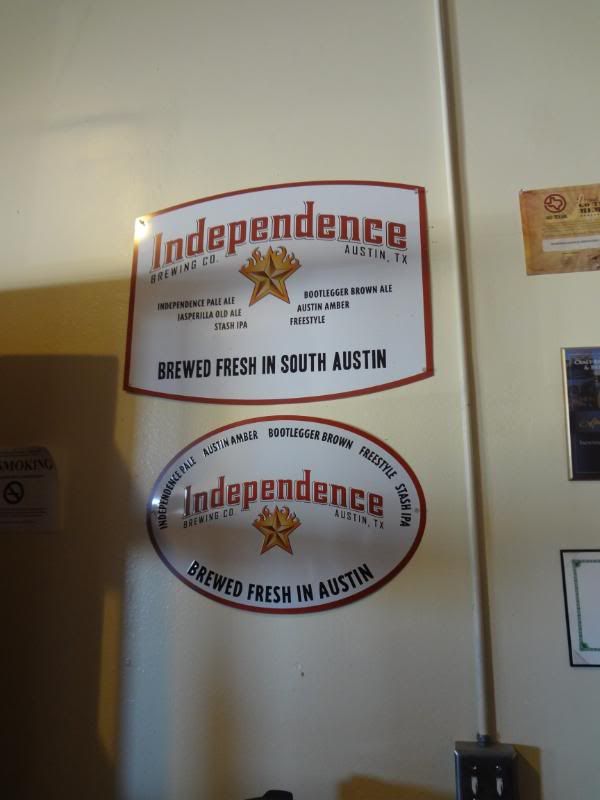 Independence Brewing co. is doing good things. When Amy and Rob Cartwright started this brewery 7 years ago there had been many brew pub closures and no new additions to the Austin brewery scene in a decade. Of course all of the brew pub closures made getting funding from banks pretty tough. During a year of failing to acquire a loan they had been networking heavily and managed to find investors instead. Even with investors Independence opened on a shoestring budget; this tight budget meant Rob would be responsible for building most of the brewery. Since employees are expensive to keep Rob and Amy did all of the bottling and keg filling on their own for the first 2 years. Texas gives brewers producing up to 70,000 barrels self distribution rights, Independence took advantage of this from the start . Self distribution is both a blessing and a curse. Rob and Amy can deal directly with their customers. However, being a small company with no budget to hire sales staff, Amy used all of her "free" time selling and distributing Independence beers. At one point Amy noted "The first 10 - 20 accounts are really
exciting! Then you all of a sudden have 100 and there are some serious
challenges in serving them all adequately. The extra accounts make the
balancing act between draft and bottle sales even tougher." To
relieve the pressure of having to deal with the challenge of sales
Independence added a sales staff in the last year.
Independence Brewing co. is doing good things. When Amy and Rob Cartwright started this brewery 7 years ago there had been many brew pub closures and no new additions to the Austin brewery scene in a decade. Of course all of the brew pub closures made getting funding from banks pretty tough. During a year of failing to acquire a loan they had been networking heavily and managed to find investors instead. Even with investors Independence opened on a shoestring budget; this tight budget meant Rob would be responsible for building most of the brewery. Since employees are expensive to keep Rob and Amy did all of the bottling and keg filling on their own for the first 2 years. Texas gives brewers producing up to 70,000 barrels self distribution rights, Independence took advantage of this from the start . Self distribution is both a blessing and a curse. Rob and Amy can deal directly with their customers. However, being a small company with no budget to hire sales staff, Amy used all of her "free" time selling and distributing Independence beers. At one point Amy noted "The first 10 - 20 accounts are really
exciting! Then you all of a sudden have 100 and there are some serious
challenges in serving them all adequately. The extra accounts make the
balancing act between draft and bottle sales even tougher." To
relieve the pressure of having to deal with the challenge of sales
Independence added a sales staff in the last year.On Distribution -
After having some early success with Central Market Stores, and finding that there was a strong sales opportunity for Independence beer in Dallas and Fort Worth, Independence began a short lived agreement with a distribution company. When this deal went sour due to the distributor not keeping their end of the bargain Independence made a decision to end the agreement. This left them in a situation where they had to entirely pull out of the new outside markets for at least 90 days (90 days turned into an indefinite withdrawal). They made the best of this turn of events and decided to focus extra hard on serving Austin and the 7 surrounding counties. They now use Brown Distribution to help them cover this area. This local focus, and very solid beers, have helped create rapid growth; Independence has doubled output from 2500 to 5000 Bbl this year alone. This growth, along with the ability to continually make new beers is a source of pride for Rob and Amy. Growth comes with it's own set of challenges - there is an unfortunate precedent among some beer drinkers to assume that if a beer is easy to find, even if it hasn't changed at all, that it is made by sell outs or a huge brewery.
All about the Beer -
Independence is not a trend chasing brewery. Their focus is aimed toward crafting solid sessionable beers that can be enjoyed by a large cross section beer lovers. This is an excellent business model which is practiced by most breweries. You must sell beer in order to continue to make beer. This model allows for plenty of adventurous brewing. After all, brewers don't want to make, and drink, the same beer all of the time. This year Independence added a specialty line of beers named "brewluminati". This series of beers, released at a current rate of about one per month, will be focused on the most unique beers the brewers can think up. This line of one off beers is sure to impress the fringes of craft beer society. To keep up to date on availability both year round and seasonally check the Independence website. I highly recommend the Stash IPA, which is available year-round. This IPA offers up a complex hop character that builds and intensifies with each sip. The finish is refreshingly palette cleansing, almost to the point of being deceptive. I found myself sucked into an existential crisis as my mind and tongue struggled to agree on what they were processing. The only way to bridge the gap is to take another sip. I think that is the mark of a classic IPA. Cheers to the Independence brewers for making such a cool beer.
Working at Independence -
The brewery was pretty hard for me to find. My GPS is being a real pain in the ass. I guess after 3.5 years of hard use it's finally time for it to be replaced. This recently developing GPS problem has left me relying more on my pitiful navigational skills (which were great before GPS!). I finally found the brewery around 9:30am. When I called the day before Amy said she was sure the brewers would be happy to have an experienced volunteer for once. I strolled in, hoping that was the case.
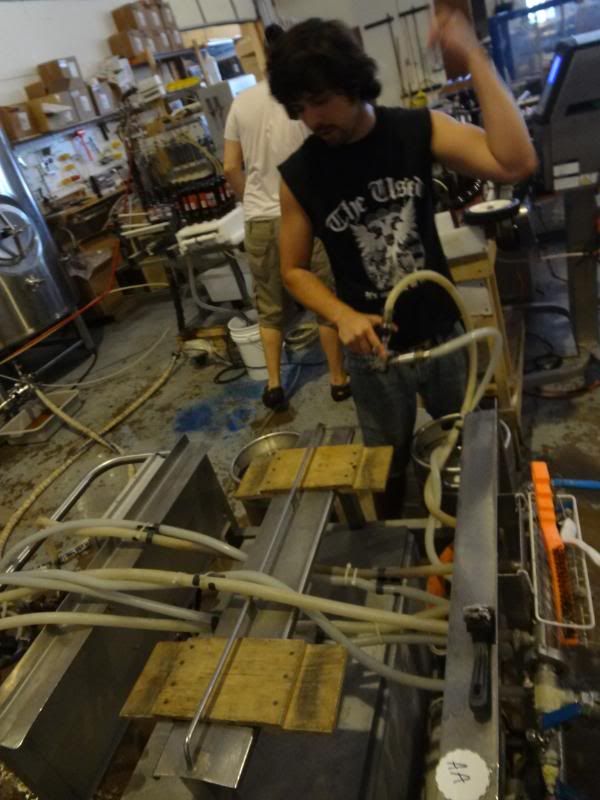 |
| The keg cleaning set up. |
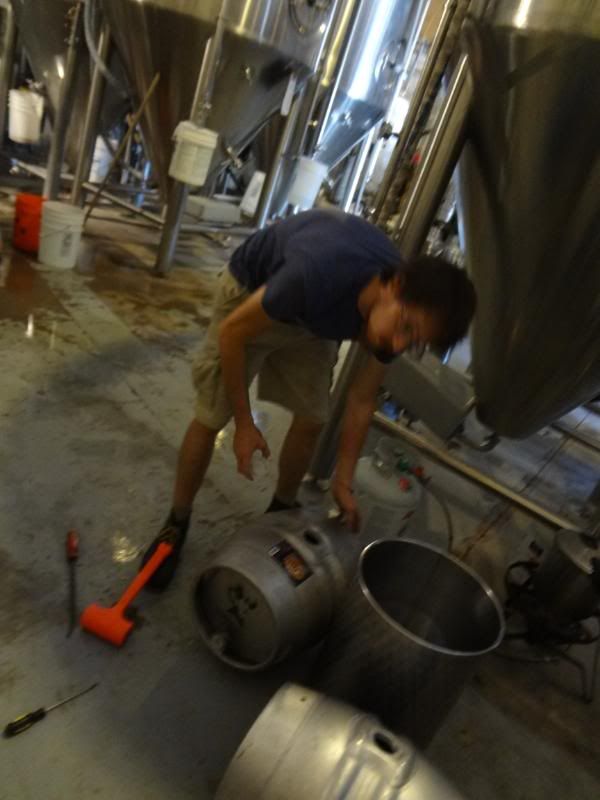
This zen like state led me to consider something. How it is that I have come this far in the trip and not given even a passage to the explanation of the brewing process?
I have assumed only people I know are reading this blog. As most of the people i know are brewers I decided not to explain brewing. That was a poor decision and I have undecided it.
Let's see you create something! -
The first step in making beer is acquiring a crippling desire to spend, but never make, money. The second step is coming to the realizing that you are now a slave to yeast. The yeast must be served a sugar rich solution (wort) which is free of contamination and full of oxygen. So, you ask, why not just feed this yeast some aerated sugar water and be done with it? That wouldn't be beer - that's why.
MASHING -
Beer is the successful, controlled combination of 4 ingredients - Water, malted barley, hops, and yeast. The process of wort production is the first step in batch production. Wort is created when crushed malted barley and hot (not boiling) water are combined. This step is called "mashing". The mash step serves to break complex sugars down into simpler sugars. These simple sugars are more easily consumed by the yeast cells. The mash is also the point at which the color of your beer is determined. There are many colors and flavors of malt. Pale malt, with it's high diastatic (or fermentable sugar creation) power, will normally be the base for a beer. To add color to your beer you will use additional malts. These additional malts range in color from light straw colored all the way to black. If you desire an amber to reddish beer you could use some crystal, caramel, or a tiny amount of roasted malt. If you want a dark beer you will need to use dark malt. Get the picture? OK. This mash will sit for 45 minutes as enzymes work at breaking down the complex sugar chains, a process called conversion. Once conversion is complete the mash is heated up to 170 degrees. This heating reduces the viscosity of the wort surrounding the malt, it also halts conversion. We will now separate the wort from the grain.
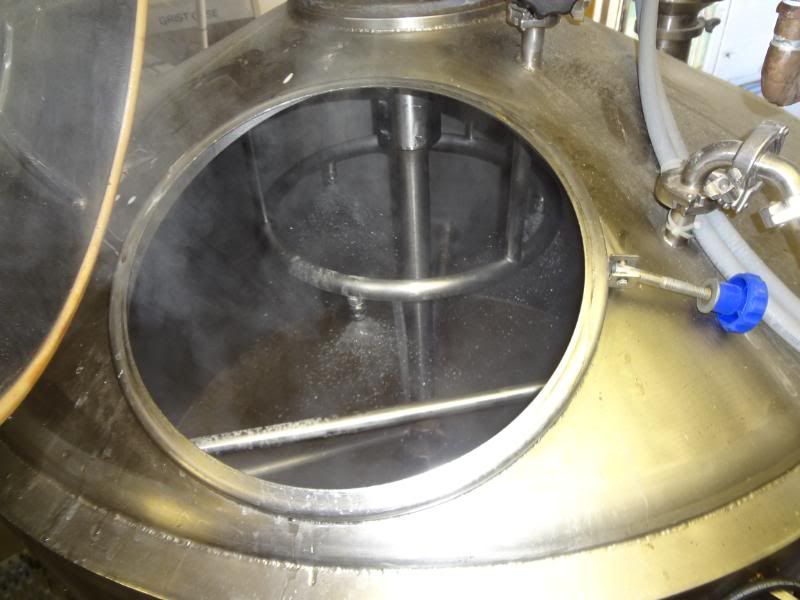 Lautering -
Lautering - Lautering is the process used to separate clear wort from the mash bed. This process is actually 3 wrapped into one. The first is mash out, or heating and transferring your mash to your lauter tun. The lauter tun has a screened false bottom. The second step is a recirculation period in which the wort is repeatedly filtered through the mash bed, with it's torturous path of barley husks. This recirculation also sets, or slightly compresses, the mash bed so that the wort running into your kettle will remain clear. That brings us to step three - sparging. Sparging is the process of dousing your recirculated mash bed with 170 degree water in an effort to push the sweet wort through the mash into the kettle. You see, during the mashing process the water that was originally added became super saturated with sugars - making it more dense. The water, if added gently enough (see picture), will simply float on the surface of the more dense wort and force it through the mash and eventually the bottom of the lauter tun. This leaves the spent grain behind; the wort is now in the Kettle.
The Kettle -
The kettle is where the wort will be boiled to sterilize it. The kettle is also where the brewer will add hops. Hops, often referred to as the spice in beer, are a flowering plant in the cannabis family (but lacking psychotropic effects). Without hops beer would be far less pleasant to drink. At the base of each hop leaf there lies a gland containing bitter oils. This is called a lupulin gland. The resins in the bitter oil of the hops also act as a natural preservative in the beer. You may add as many or as few hops as you like. Or you could add virtually none and rely on a marketing team to sell people the idea that you do, something I would love to see a home brewer try. In our imaginary beer we will add hops twice. The first addition will be at the beginning of the boil. This addition will leave behind only bitterness. The aromatic oils in the hop are volatile and will boil off after ten minutes. The second hop addition will be made with 5 minutes remaining in the boil. This addition serves to add hop aroma that will compliment the bitterness left by the first addition.
The Chilling -
If I douse you in boiling liquids you will die. You're very much like yeast in that respect. In an effort to help your yeast live you will need to chill your wort. The aim is to chill the wort as rapidly as possible so that it may be aerated and mixed with yeast. This will give the yeast the optimum grounds in which to reproduce and create alcohol. The faster you chill your wort the less chance there is for bacterial contaminates to spoil the game for the yeast. This will make your beer better. Buy (or make) a chiller. Use it. Keep it clean and sanitized.
Aeration - You're beer will be no good if you don't aerate your wort after chilling. Don't skip this step. Aeration is the introduction of oxygen into your chilled wort. Yeast needs oxygen to begin it's life cycle.
Yeast -
Consider how many species of dog there are in the world today. Now replace the word dog with the word yeast and double the number you thought of. That will give you an idea of how many varieties of yeast are available to brewers. There are both Lager and Ale yeasts. Lager yeast functions best at 45 - 55 degrees, it is also slower to finish it's consumption of sugars. Ale yeast acts best at 70 degrees and can fully ferment beer in as little as 5 days. The yeast you choose will have a large impact on the beer you end up with. If you brew the same beer identically over ten instances with yeast being the only variable, you will have ten different beers. Regardless of the yeast you choose it is good to know that the yeast is a single celled organism that eats sugar, reproduces rapidly, and produces alcohol and Co2. You can choose your yeast with the utmost care but if you are not clean and sanitary in your brewing practices you should know that there are wild yeasts out there that will spoil your beer. Care must be taken to ensure that this does not happen.
Fermentation - Fermentation in brewing is the process of converting sugars into alcohol using yeast. There is a lot more to fermentation; since this is an overview, and I have no chemistry background, I will not attempt to demystify if for you. Once fermentation is over (again, this depends on which yeast you use) it is time to filter and package.
Filtration -
Filtration is the clarification of beer by the removal of yeast and protein. Filtration is optional in brewing.
 Packaging -
Packaging -Keg, can, or bottle? You need a place to put your beer after fermentation. This choice is yours. just make sure to follow sanitary procedures during this step to ensure your packaged beer is not harmed during this step.
Now Drink!
I would like to thank Independence brewing co. for an awesome time.


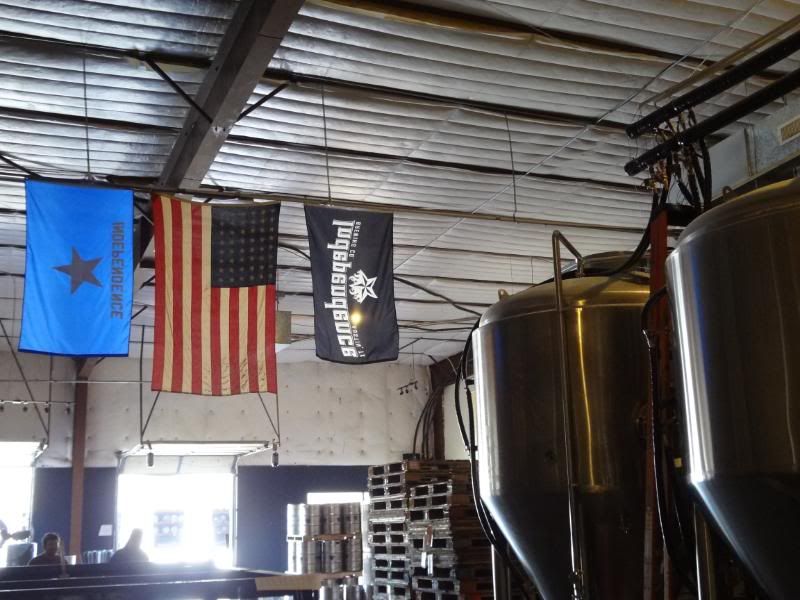




No comments:
Post a Comment